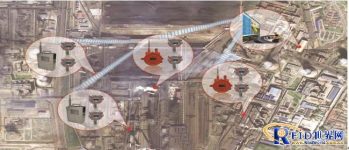
Application of Wireless Ad Hoc Network Transmission Module in Monitoring System of Metallurgical Workshop
[ad_1]
1. Project introduction
When metallurgical enterprises upgrade their systems and equipment during the years, the original fixed systems of each workshop need to be integrated into the control center through fieldbus, industrial Ethernet or wireless transmission. The wireless intelligent controller with JRc wireless module, through the use of wireless transmission, can not only solve the problems of wiring difficulties and wiring costs, but also reduce the workload of construction and daily maintenance.
In a steelmaking plant area CO detection system technical transformation project, using a wireless intelligent controller with JRc wireless module, the uniqueness of the scheme and the stability of the system have been recognized by the safety management department of the steel plant. A total of 7 intelligent controllers are used in the 7 subsystems in the steel-making plant. The intelligent controller wirelessly transmits the detection information to the control center through the wireless transmission module. The control center monitors the CO gas concentration in the steel-making plant in real time through the SCADA control platform.
The complex environment of various workshops in metallurgical enterprises has a large number of metal shields, which has a serious impact on the effect of wireless transmission. Since the wireless intelligent controller adopts the Ad-hoc network protocol, it can realize the intelligent multi-hop function and ensure the stable transmission of data.

2. System function
The front end of the system is composed of a 4-20mA fixed gas detector. The detector in each workshop transmits the detection information to the wireless intelligent controller in the workshop control room through a wired connection, and the wireless intelligent controller in each workshop collects the data through wireless transmission To the control center, centralized monitoring of the entire plant area was realized through SCADA software. System structure diagram, as shown in the following figure:

The system mainly has the following functions:
●On the monitoring side, through the SCADA control platform, the inspection points of the entire plant can be centrally monitored
●It can communicate with the control center in two ways, wired or wireless, supports RS485 bus, Ethernet and wireless transmission, and adapts to the system environment of different enterprises
●The fixed detector at the detection point supports acousto-optic alarm, which can realize the on-site acousto-optic alarm function
●Wireless intelligent controller supports sound and light alarm
●Optional access to wireless detector (MeshGuard wireless gas detector), providing emergency applications during equipment maintenance
Three, system characteristics
Features of gas detection system based on wireless intelligent controller:
●Realize the integration of various subsystems: the isolated subsystems of each workshop can quickly build a comprehensive control system through the wireless transmission function of the T wireless intelligent controller
●Low cost: low overall system cost
●Easy to maintain: the use of wireless network reduces the workload of system troubleshooting, improves work efficiency, and saves maintenance costs
●Strong scalability: the system supports the monitoring of large amounts of data, which provides a guarantee for system upgrades
●Easy to install: the wireless system is simple to install, which can realize the rapid installation of the system and save the wiring cost at the same time
●Strong anti-interference and shielding ability: The system adopts Ad-hoc network protocol, which can realize self-organizing network and intelligent multi-hop
[ad_2]



